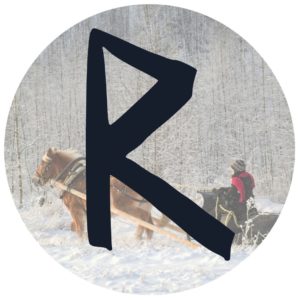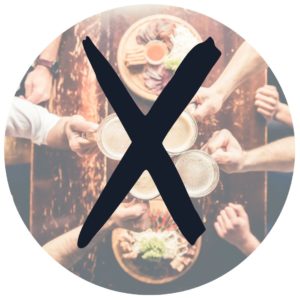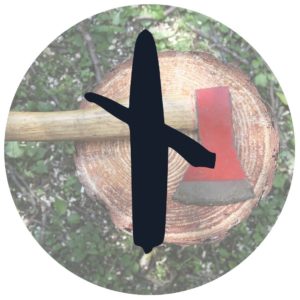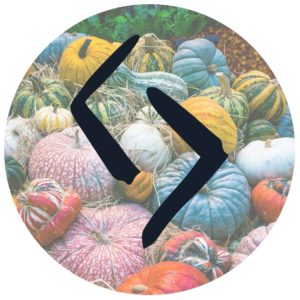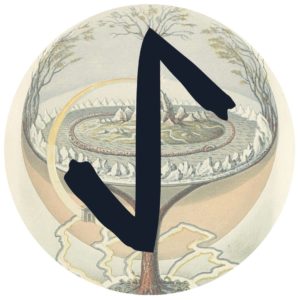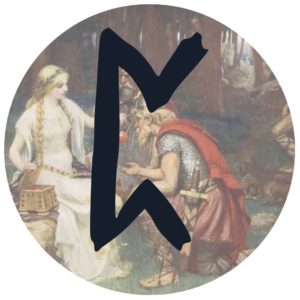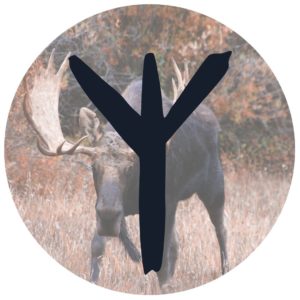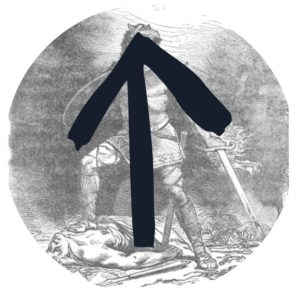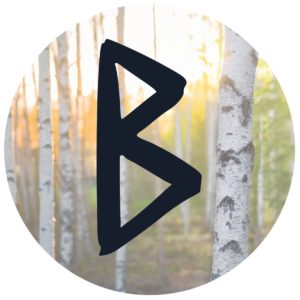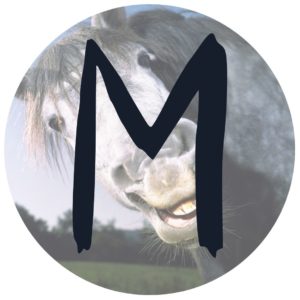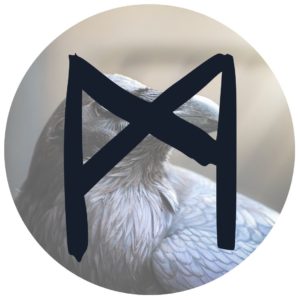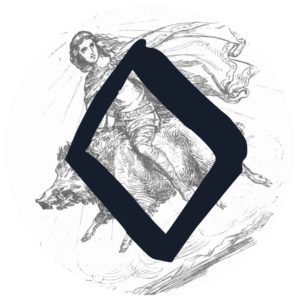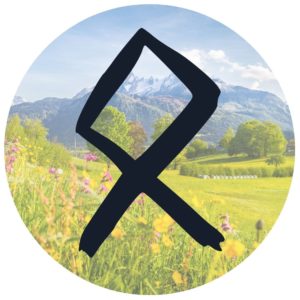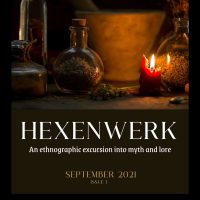No products in the cart.
Click the images below to learn about Rune meanings as well as proper pronunciation and phonetics
We don’t know a whole lot about the Runes today and their deeper meanings.
That is due to the written sources that we have. For the rune meanings found on this page, I have found information in the Old English Rune poem from the 8th Century, the old Icelandic Rune poems from the 15 Century, the Abecedarium Nordmannicum, and the skaldic Old Norwegian Rune poem from the 17th Century.
I of course have found information in the Prose Edda, the Íslendingasögur from Iceland, and other sources. I do not and can not claim 100% truth to my information and I cannot claim that I know the truth about the Runes.
I do, however, strongly encourage research and finding out about the mysterious Runic alphabet. I did a lot of research from The Viking World and The Viking Way from Neil Price, and many others.
Images are copyright! If you share to your social media, you must tag and give credit to @thewickedgriffin
Rune Meanings introduction
Let's get to the primal source of it all...
Surest are secrets shared with no one, But now my spells are sung...
In the Germanic language group, the word Runes means “secret”, or “whisper”, deriving from Proto-Germanic rūnō, an Indo-European language that evolved from Proto-Indo-European and was spoken around 500 BC and gave birth to Proto Norse in the first Century CE.
Some of the earliest and thus oldest Elder Futhark Runic Inscriptions go back to 150 AD, with roots in the Germanic Iron Age. This mysterious Proto-Indo-European culture thus played an essential role in the birth and creation of the Germanic language group.
Norse Mythology itself originates from their ancient creation myths, with the oldest finds in Scandinavia possibly originating in the Nordic Bronze Age, depicting Nerthus, Tyr and also Thor.
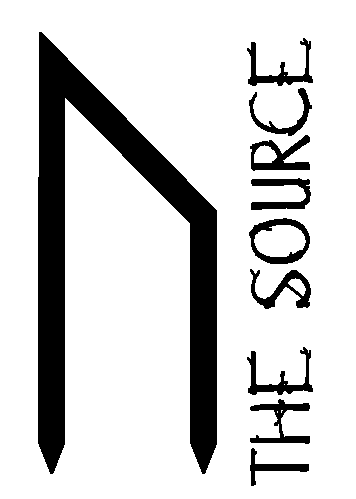
But where do the Runes come from? It is the Alphabet of the Vikings, right? They indeed have used the Runes, but the origin is much more complex.
The “North Etruscan thesis” finds support due to the findings of the Negau helmet inscription that dates back to the 2cnd Century BC.
The thesis suggests that the Runes derive from a North-Italic alphabet, especially venetic.
With the conquer of the Romans, the latin alphabet became prominent and the ancient venetic culture vanished.
The hypothesis is that the ancient Italic Etruscan pagans were heavily influenced by western Greek and that the mix of Latin and Etruscan gave birth to the runic scripts.
The problem is that the oral tradition of the Celtic culture reduced the possibility of finding texts. The same goes for western Germanic cultures.
The Golasecca culture of the Rhaetian-family (Eastern Alps: Switzerland, southern Germany, northern Italy) shows interesting inscriptions that clearly resemble Runic dating back to 480-450 BC.
We know that Runic is very complex, there is exoteric, esoteric and mythological dimensions to them and archaeological findings clearly point to the fact, that Runic does possibly not origin in Scandinavia, but way further down south.
If you received value from this free content, perhaps you’d like to support us by checking out our digital magazine? No subscription, pay per issue 🙂
ᛉ
The mystery remains but...
If we choose to seek and understand the Runes, we need to dig deeper. Celtic and western Germanic language derived from Indo-European, and more findings have shown that the Etruscan alphabet might have developed through an adaptation of the Greek alphabet, which in turn influenced the Latin alphabet heavily. The Celtic Lepontic alphabet, which is derived from Etruscan might be one of the ancient Scripts that gave birth to the Fuþark (200-700 AD) and thus to the Runes that are tied Proto-Germanic. But then there are the symbols of the Vinca Tablets and things become even more mysterious.
But how do we know that Runes are perhaps more than just another alphabet?
The answer to this question is that we do not know for sure, but there are many hints.
Even though medieval Icelandic literature is tricky as a historical source, with many compiled as late as the 13th Century under christian influence, we can study etymological meanings.
The question on whether or not Runes possessed spiritual quality lies in the question on whether or not the Germanic people practiced techniques or rituals that can be seen as “shamanic”.
ᚨ
Islendingasögur talks about prophets, sorcerers and remains have been found within graves that conclude shamanic practice: we can see shamanic traits that conclude the practice of said techniques.
Magnús Hákonarson refers to Galdrar, “Galdrar ok gerningar”, as a singing sorcery.
The practice of shamanic techniques was an occupation and activity, instead of a religion or doctrine.
It is not a common belief or teaching.
ᚨ
In the Poetic Edda, Odin says that the Runes derive from prophecy. In Baldrs Draumar, Odin uses a spell to resurrect a völva.
Odin, it seems, is an Archetype, of initiation into shamanic techniques. In Eiriks Saga Porbjörg communicates with spirits via ritual and singing.
Words and carving Runes or letters...
“Buchstabe” in High German “Beech-staffs”, implies the powerful nature of words and spells.
The accurate term for this power in words and letters is Proto-Germanic maginą or Old Norse “megin” from PIE root “meg”, to be able.
But able of what?
What ability?
There’s “megin” for all the elements, earth, water and so on (*iardarmegin, *Hafmegin).
“Megin” seems to have been very important. “Megin” seems to have been everywhere.
The infamous Old High German Merseburger Zaubersprüche Charms offer literary sources, too: Every word is power (“Kraft”) and can heal or destroy.
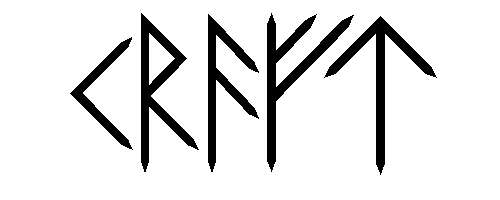

A brief overview of the significance of the Elder Futhark runes
The Elder Futhark runes are more than just ancient symbols. They stand as a profound testament to the spiritual heritage of the Germanic peoples. Rooted deeply in Norse mythology and Germanic paganism, these runes offer insights into traditions and practices from Northern Europe.
Originating as the oldest form of the runic alphabet, the Elder Futhark was a primary writing system for Germanic tribes. But it wasn’t just for mundane communication. Each rune symbol held specific meanings, intertwined with life’s spiritual journey and nature’s forces.
For many, runes are akin to tarot cards. They’re tools for divination, offering guidance in everyday life and signs of hope in challenges. The word “rune”, from the Germanic word, signifies a “secret” or “whisper”, highlighting their mystical nature.
The Elder Futhark divides into three ‘aetts’ – Freya’s aett, Heimdall’s aett, and Tyr’s aett. Each aett associates with specific deities and themes, enriching the stories behind each rune.
In modern times, there’s a resurgence in rune interest. Especially among pagans, Wiccans, and those drawn to Norse spiritual heritage. Shows like “Vikings” have reignited curiosity about Norse mythology, the use of runes, and their given meanings.
As we delve deeper, it’s vital to approach with respect for the wisdom of the runes and the ancient language they represent. Whether for personal growth, spiritual insight, or understanding Germanic paganism, runes offer a window into an ancient, yet ever-relevant world.
Historical Context of Runes
Origins of the Runes
The Elder Futhark runes stand as the oldest form of the runic alphabet, deeply rooted in the traditions and ancient language of the Germanic tribes. These unique symbols were more than mere letters; they were imbued with power and meaning, serving as a bridge between the material world and the spiritual heritage of the Germanic peoples. The runes were not just a writing system but a testament to the beliefs, values, and everyday life of human beings who once roamed Northern Europe.
Evolution from Elder Futhark to Younger Futhark
The transition from the Elder Futhark to the Younger Futhark was not merely a matter of reducing the number of runes. It was a reflection of the socio-cultural changes during the Viking Age.
The Younger Futhark, also known as Scandinavian runes, emerged around the 9th century, after a “transitional period” during the 7th and 8th centuries. This reduction in runes, from 24 to 16, occurred paradoxically at a time when the spoken language, evolving from Proto-Norse to Old Norse, saw an increase in phonetic diversity.
The Younger Futhark runes were further divided into long-branch (Danish) and short-twig (Swedish and Norwegian) runes, each with its nuances and specificities. The Viking Age, marked by exploration and expansion, saw these runes inscribed on stones, artifacts, and even in far-off lands where the Vikings traveled.
Comparison with Other Writing Systems
Runes were not the only writing systems in ancient Europe. The Anglo-Saxon Futhorc was another runic script, bearing similarities yet distinct differences from the Elder and Younger Futhark. As European languages evolved and intermingled, the influence of these runic scripts became evident.
For instance, the Anglo-Saxon runes had their own set of characters, some of which were borrowed from the Futhark, while others were unique to the region. Comparing these writing systems provides a glimpse into the interconnectedness of ancient cultures and how communication transcended borders, leading to a rich tapestry of linguistic and cultural exchange.
Deep Dive into Rune Meanings
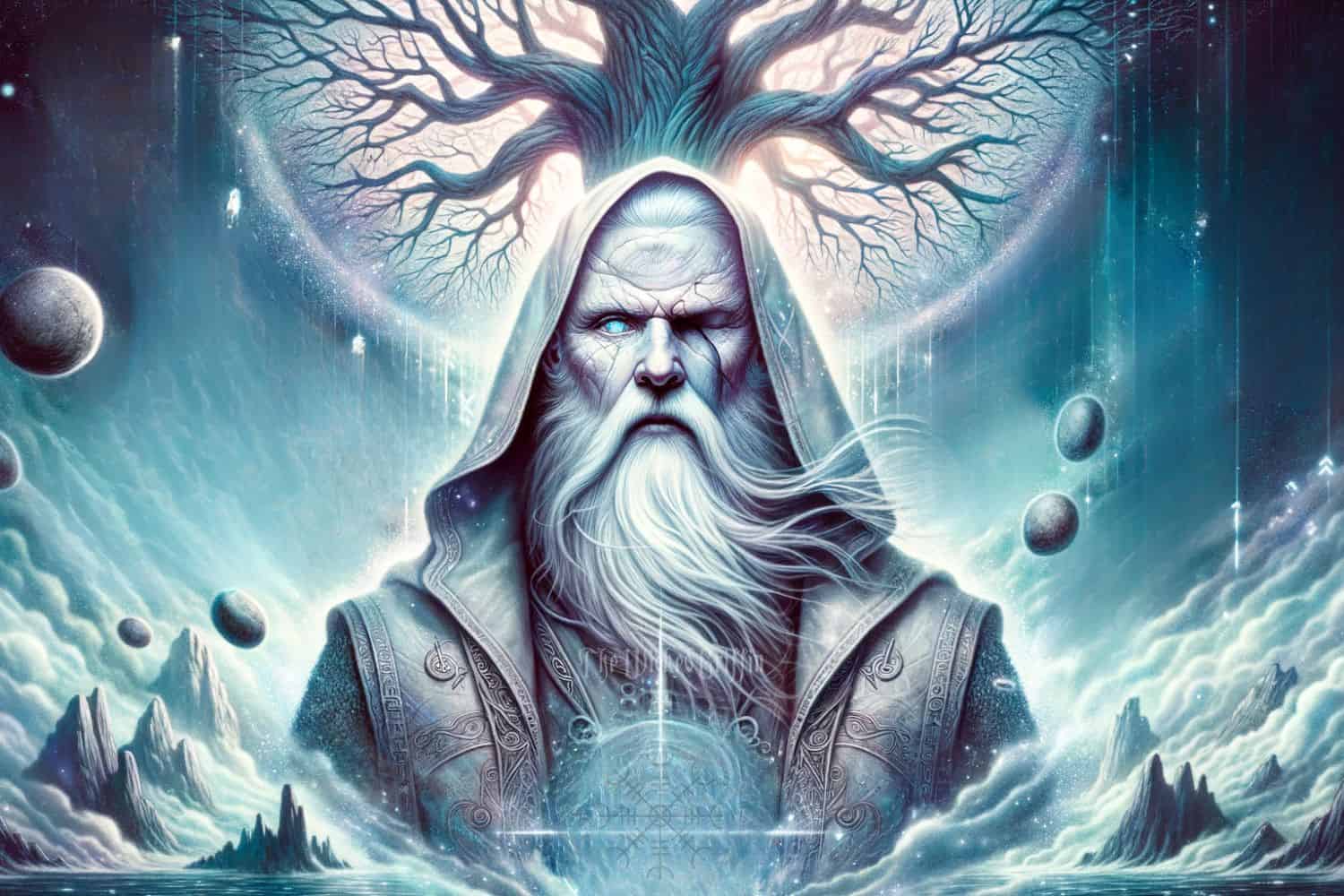
Odin’s Influence and Spiritual Heritage
Odin, the Allfather in Norse mythology, is intrinsically linked to the runes. Legend has it that Odin hung from the world tree, Yggdrasil, for nine nights, pierced by his own spear, to gain the wisdom of the runes. This act wasn’t just about acquiring knowledge; it was a spiritual journey, a sacrifice for understanding the deeper meanings of the runes.
Odin’s rune, often referred to as Odin’s rune, encapsulates this quest for knowledge, wisdom, and understanding. The spiritual heritage of the runes is deeply intertwined with Odin’s sacrifices and visions, shaping the way they are perceived and interpreted in the context of Norse paganism.
The Three Aettir: Freya’s Aett, Heimdall’s Aett, and Tyr’s Aett
The Elder Futhark runes are organized into three groups known as aettir. Each aett has its own significance and is associated with specific Norse gods:
– Freya’s Aett: Freya, the Norse goddess of love, fertility, and beauty, governs this group. The runes under this aett often deal with matters of the heart, emotions, and human connections.
– Heimdall’s Aett: Heimdall, the guardian of the Bifrost bridge, is associated with this aett. The runes here are linked to protection, vigilance, and foresight.
– Tyr’s Aett: Tyr, the god of law and heroic glory, is the figurehead for this group. The runes in Tyr’s aett often revolve around themes of justice, honor, and societal order.
Specific Rune Highlights
– Wunjo Rune: Symbolizing joy, good fortune, and harmony, the Wunjo rune is a beacon of positive energy and good things. It’s a sign of hope in the runic alphabet, often associated with new beginnings and happiness.
– Ansuz Rune: Representing communication, this rune is tied to Odin and signifies divine messages or insights. It’s a rune of wisdom, often used in rune reading for guidance.
– Fehu Rune: Symbolizing wealth and financial strength, Fehu is not just about material riches but also spiritual wealth and well-being.
– Thurisaz Rune: Often seen as a protective rune, Thurisaz is also a symbol of hard work leading to positive changes. It’s associated with the thorn or the giant, indicating challenges that can be overcome.
– Raidho Rune: Representing travel or a journey, Raidho is not just about physical journeys but also the journey of life or a spiritual journey. It signifies movement, change, and progress.
– Other Runes: Each rune, from those symbolizing the birch tree or the wild ox to those indicating inner strength or radical change, has its own unique symbols and meanings. They offer insights into everyday life, human beings, and the natural world, serving as guides for those who seek their wisdom.
Runes in Modern Practices

Rune Reading and Casting
The ancient art of rune reading and casting has seen a resurgence in modern times, especially among those drawn to spiritual practices rooted in tradition. Much like tarot cards, runes offer insights into one’s life, decisions, and future. However, while tarot relies on intricate imagery, runes are more abstract, requiring a deeper understanding of each rune’s specific meaning.
When casting runes, the position, orientation, and combination of runes can provide nuanced readings, guiding individuals through challenges, decisions, and introspections. It’s a practice that demands respect, intuition, and, most importantly, knowledge of the rich tapestry of meanings behind each symbol.
Runes and Spiritual Practices
In today’s fast-paced world, many seek solace and guidance in spiritual practices. Runes, with their ancient origins and profound meanings, serve as a bridge to the spiritual realm. They’re not just tools for divination; they’re symbols of universal truths, energies, and archetypes.
For instance, meditating on the Sowilo rune can invoke positive energy, guiding one on the right path towards enlightenment and clarity. Similarly, the Thurisaz rune, a powerful rune, can be invoked for protection and to ward off negative energies.
Beyond divination, runes are also used in rituals to ensure good health, bring about positive changes, and align oneself with the forces of nature and the cosmos.
The Controversy of the Blank Rune
The inclusion of the blank rune in modern rune sets has been a topic of debate among rune enthusiasts and scholars. Traditionally, the Elder Futhark, the oldest form of the runic alphabet, did not include a blank rune. Its introduction in contemporary practices has raised questions about its authenticity and relevance.
Some argue that the blank rune, devoid of markings, represents the unknowable and the mysteries of the universe, adding depth to rune readings. Others believe it’s a modern addition, lacking historical basis. Regardless of its origins, the blank rune has found its place in many modern rune sets, and its interpretation varies among practitioners.
Some see it as a wild card, while others view it as a pause or a need for reflection. Its controversy serves as a reminder of the ever-evolving nature of spiritual practices and the importance of personal intuition and connection in interpreting symbols and signs.
Challenging Conventional Thinking
Beyond the Material World
In our modern, fast-paced society, it’s easy to become ensnared in the tangible, material aspects of life. However, the runes beckon us to delve deeper, to transcend the superficial and explore the spiritual. Each rune, with its unique symbols and meanings, is a gateway to understanding the mysteries of the universe and our place within it.
For instance, the meaning of runes isn’t just about predicting future events or understanding the present; it’s about comprehending the intricate dance of the life cycle, the ebb and flow of energies, and the cosmic balance that governs all.
When we cast runes, whether on rune stones or through other means, we’re not just seeking answers; we’re seeking enlightenment, a connection to the ancient wisdom that reminds us of the transient nature of the material world and the eternal essence of the spiritual realm.
Runes and the Natural World
The runes are not isolated symbols; they are deeply intertwined with the natural world. Their origins and meanings are rooted in the environment, the cosmos, and the very fabric of existence. For instance, runes have long been associated with the world tree, Yggdrasil, a cosmic ash tree that connects all realms of existence.
This tree is not just a mythological concept; it’s a representation of the interconnectedness of life, nature, and the universe. Similarly, runes resonate with events in the natural world, including natural disasters. A rune casting might hint at impending challenges, urging the reader to be prepared, not just in a physical sense but also spiritually and mentally.
The runes remind us that we are part of a vast, intricate web of existence, where every action has a reaction, and every event is a ripple in the cosmic pond. By understanding and respecting this interconnectedness, we not only enrich our own lives but also contribute to the harmony and balance of the world around us.
Enduring Legacy of the Runes
The Elder Futhark Norse runes meanings are not mere relics of a bygone era; they are timeless symbols that continue to resonate with individuals across generations. These runes, with their profound meanings and rich history, serve as a bridge connecting us to the ancient wisdom of the Germanic tribes and the spiritual heritage of the Norse pantheon.
In today’s world, where technology reigns supreme and life often feels disconnected from nature and spirituality, the runes offer a grounding force. They remind us of the cyclical nature of existence, the interconnectedness of all things, and the deeper truths that lie beyond the material realm. For those who seek guidance, clarity, or a deeper understanding of themselves and the universe, the runes provide a path. They are not just tools for divination but are gateways to introspection, self-discovery, and spiritual growth.
The runes also serve as a testament to the enduring spirit of human beings. Despite the passage of time, the evolution of cultures, and the myriad changes that have shaped the world, the runes remain relevant. They are a testament to the shared human experience, the quest for knowledge, and the innate desire to connect with something greater than oneself.
In modern times, as we navigate the challenges and uncertainties of life, the runes offer solace and guidance. They urge us to look within, to trust our intuition, and to seek the wisdom that has been passed down through the ages. Whether one is drawn to the runes for their historical significance, their spiritual depth, or their aesthetic appeal, they offer a wealth of insights and lessons.
As we reflect on the legacy of the runes, it’s evident that their allure is not just rooted in their antiquity but in their universality. They speak to the human soul, transcending boundaries of time and space, and offer timeless wisdom to those willing to listen. In embracing the runes, we not only honor the past but also enrich our present and pave the way for a future where ancient knowledge and modern understanding coalesce in harmony.
Final Thoughts
The journey into the world of Norse paganism and the profound meanings of the Elder Futhark runes is a path filled with discovery, introspection, and spiritual growth. Each rune, with its unique symbols and intricate meanings, offers a window into a rich tapestry of history, mythology, and spiritual wisdom. But understanding the runes is just the beginning.
For those who feel a deep connection to the Norse pantheon and the ancient wisdom of the Germanic tribes, there are myriad ways to further immerse oneself in this spiritual heritage. One such way is by adorning oneself with handcrafted pagan jewelry.
These pieces, crafted with care and reverence, serve not only as beautiful adornments but also as tangible reminders of the spiritual journey one is undertaking. They resonate with the energies of the runes, the gods, and the ancient traditions, allowing the wearer to carry a piece of this rich heritage with them wherever they go.
Moreover, for those who wish to delve deeper into their spiritual journey with the runes, there are countless resources, rituals, and practices to explore. From rune casting and meditation to studying the sagas and myths of the Norse gods, the world of Norse paganism is vast and varied. It beckons to all who are willing to listen, learn, and grow.
So, whether you’re drawn to the aesthetic beauty of Norse symbols, the spiritual depth of the runes, or the allure of handcrafted pagan jewelry, there’s a world waiting to be explored. Embrace the journey, trust the path, and let the runes guide you towards greater understanding, connection, and enlightenment. Remember, the wisdom of the runes is not just in their meanings but in the journey they inspire. Dive in, explore, and let your spirit soar.

FAQ
What is the significance of the yew tree in Norse paganism?
The yew tree holds a special place in Norse mythology and is often associated with Yggdrasil, the world tree. Its long lifespan and evergreen nature make it a symbol of endurance and eternal life.
Can you provide a short description of the meaning of rune symbols?
Certainly! Rune symbols are ancient alphabetic scripts used by the Germanic tribes. Each symbol holds specific meanings, often tied to nature, gods, or everyday life. For instance, the gebo rune represents gifts and partnerships, while the runic symbols of the elder futhark encompass broader themes of life, death, and destiny.
How does the rune of communication influence one’s spiritual journey?
The rune of communication, often associated with the god Odin, emphasizes the importance of wisdom, knowledge, and the exchange of ideas. It encourages seekers to connect with the divine and with others, fostering understanding and enlightenment.
Is there a right time to start exploring runes and Norse paganism?
There’s no specific right time. The journey into Norse paganism and runes is deeply personal. Whether you’re drawn by curiosity, a sense of spiritual calling, or a desire for knowledge, any time is a good time to embark on this path.
What’s the difference between the Freyr’s aett, Freyja’s aett, and the runes of the elder futhark?
The Elder Futhark is divided into three groups or aettir. Freyr’s aett and Freyja’s aett are two of these groups, each containing eight runes. Each aett is associated with specific Norse gods and themes.
How can I ensure a good harvest using runes?
While runes are spiritual tools and not guarantees of outcomes, they can be used in rituals and meditations to seek blessings and guidance. The rune set, when used with intention and respect, can help channel positive energies and insights for a fruitful harvest.
Are there any runes that signify social order or the life force?
Yes, runes like the fehu rune represent wealth, prosperity, and social order, while others, like the sowilo rune, symbolize the life force, vitality, and the sun’s energy.
What does it mean if I draw a rune in its reversed position during a rune reading?
A reversed rune can have a different or intensified meaning compared to its upright position. It’s essential to consider the context and your intuition when interpreting reversed runes.
Can you explain the origin of the runes and their connection to the long branch writing system?
The runes, especially the first runes of the elder futhark, have ancient origins tracing back to the Germanic tribes. The long branch is a variation of the runic script, often associated with the Younger Futhark, and was used during the Viking Age.
Is there a rune that signifies making a wrong decision or warns against it?
While no specific rune directly translates to a “wrong decision,” runes like thurisaz can indicate challenges or potential dangers. It’s crucial to consider the entire rune reading and your intuition when seeking guidance.





